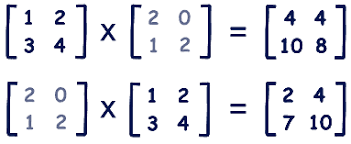Matrix Calculator – Free Online Matrix Solver
Our Matrix Calculator is a powerful and easy-to-use tool designed to help you solve a wide range of matrix operations instantly. Whether you’re a student, teacher, engineer, or professional working with mathematics, this calculator saves time by providing accurate results for any type of matrix computation.

What is a Matrix Calculator?
A matrix calculator is a digital tool that performs mathematical operations on matrices—rectangular arrays of numbers arranged in rows and columns. These operations are essential in areas like algebra, statistics, physics, computer science, engineering, and data analysis. Manually solving matrices can be time-consuming, especially for larger ones. With this tool, you can quickly input values, perform calculations, and get step-by-step results from this matrix calculator
Matrix Calculator
Matrix A Input
Matrix B Input
Matrix Calculator Guide
A matrix, in a mathematical context, is a rectangular array of numbers, symbols, or expressions that are arranged in rows and columns. Matrices are often used in scientific fields such as physics, computer graphics, probability theory, statistics, calculus, numerical analysis, and more.
The dimensions of a matrix, A, are typically denoted as m × n. This means that A has m rows and n columns. When referring to a specific value in a matrix, called an element, a variable with two subscripts is often used to denote each element based on its position in the matrix. For example, given ai,j, where i = 1 and j = 3, a1,3 is the value of the element in the first row and the third column.
Matrix operations such as addition, multiplication, subtraction, etc., are similar to what most people are likely accustomed to seeing in basic arithmetic and algebra, but do differ in some ways, and are subject to certain constraints. Below are descriptions of the matrix operations that this calculator can perform.
Matrix Addition
Matrix addition can only be performed on matrices of the same size. This means that you can only add matrices if both matrices are m × n. For example, you can add two or more 3 × 3, 1 × 2, or 5 × 4 matrices. You cannot add a 2 × 3 and a 3 × 2 matrix, or a 4 × 4 and a 3 × 3. The number of rows and columns of all the matrices being added must exactly match.
If the matrices are the same size, matrix addition is performed by adding the corresponding elements in the matrices. For example:
A = 1 2 B = 5 6
3 4 7 8
C = 6 8
10 12
Matrix Subtraction
Matrix subtraction is performed in much the same way as matrix addition, except that values are subtracted. Like matrix addition, the matrices must be the same size:
A = 1 2 B = 5 6
3 4 7 8
C = -4 -4
-4 -4
Matrix Multiplication
Scalar Multiplication
Matrices can be multiplied by a scalar value by multiplying each element by the scalar:
A = 1 2
3 4
c = 5
c × A = 5 10
15 20
Matrix-Matrix Multiplication
Multiplying two matrices requires the number of columns in the first matrix to match the number of rows in the second. Example:
A (2×3) × B (3×4) = C (2×4)
Matrix multiplication uses the dot product: each row of A is multiplied by each column of B, and summed to produce the element of C.
Power of a Matrix
The power of a matrix means raising a square matrix to an exponent. For example:
A = 1 3
2 1
A² = 7 6
4 7
Transpose of a Matrix
The transpose flips a matrix over its diagonal, switching rows and columns:
A = 1 3 Aᵀ = 1 2
2 1 3 1
Determinant of a Matrix
The determinant is a scalar value computed from a square matrix. For a 2×2 matrix:
A = a b |A| = ad - bc
c d
For larger matrices (3×3, 4×4, etc.), the Laplace or Leibniz formulas are used.
Inverse of a Matrix
The inverse of a matrix A is denoted A⁻¹, where:
A × A⁻¹ = I
For a 2×2 matrix:
A = a b A⁻¹ = (1 / (ad - bc)) × d -b
c d -c a
